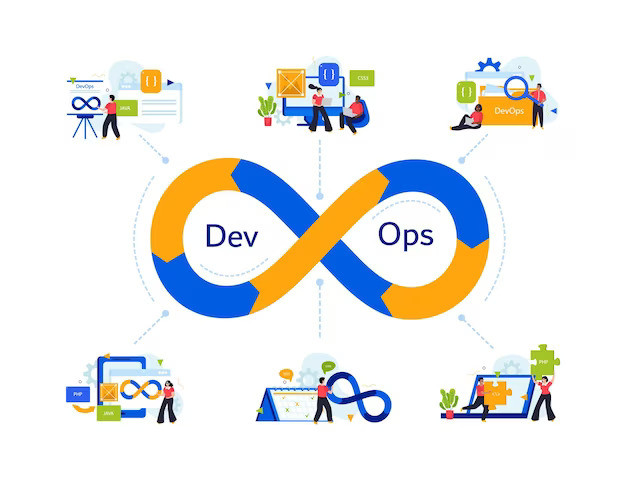Mastering Python: A Comprehensive Roadmap for Success
Introduction:Python has emerged as one of the most versatile and widely used programming languages, powering everything from web development and data science to artificia...

Mastering DevOps: A Step-by-Step Workflow Guide
Introduction:
In the realm of software development, DevOps has emerged as a transformative approach, aligning development with operations to streamline the software delivery process. It's not just a methodology; it's a culture that promotes collaboration, automation, and continuous improvement. Mastering DevOps involves understanding its principles and implementing a systematic workflow. This comprehensive guide aims to unravel the step-by-step process of mastering DevOps.
Understanding DevOps:
DevOps, an amalgamation of "development" and "operations," embodies a set of practices emphasizing collaboration and communication between software developers and IT professionals. It aims to automate the software delivery process and improve the quality of software development.
Key Principles of DevOps:
Collaboration: Breaking down silos and fostering a culture of collaboration between development, operations, and other stakeholders is fundamental.
Automation: Leveraging automation tools for building, testing, and deployment accelerates the delivery process and minimizes errors.
Continuous Integration and Continuous Deployment (CI/CD): Embracing CI/CD pipelines allows for continuous integration of code changes and automated deployment, ensuring faster, reliable releases.
Step-by-Step Workflow Guide:
1. Assess Current Processes: Understand existing workflows and identify bottlenecks or inefficiencies.
2. Cultural Transformation: Instill a culture of collaboration, mutual trust, and shared responsibility among teams.
3. Tool Selection: Choose suitable tools for version control, automated testing, and deployment (e.g., Git, Jenkins, Docker, Kubernetes).
4. Continuous Integration (CI): Integrate code changes frequently to a shared repository. Implement automated testing to detect issues early.
5. Continuous Deployment (CD): Automate the deployment process to swiftly deliver code changes into production environments.
6. Monitoring and Feedback: Implement monitoring tools to collect data and feedback on system performance and user experience.
7. Continuous Improvement: Analyze feedback and data to drive improvements in processes and tools continually.
8. Security Integration: Embed security practices within the workflow to ensure the safety of software and data.
Challenges and Solutions:
DevOps implementation may face hurdles like resistance to change, tool integration complexities, or security concerns. Address these by fostering a culture that embraces change, selecting tools that integrate seamlessly, and prioritizing security at every stage of the workflow.
Conclusion:
Mastering DevOps is not a destination but a journey. It requires commitment, adaptability, and a continuous learning mindset. By following a systematic step-by-step workflow, embracing collaboration, and leveraging automation, teams can achieve a more efficient, agile, and robust software development process. The journey to mastering DevOps is one that evolves with technological advancements and changing business needs, promising a more efficient and reliable software delivery.
DevOps isn't just a methodology; it's a culture shift that reshapes the way software development and operations collaborate. Mastering DevOps involves understanding its principles and adopting a step-by-step workflow that aligns with these principles, promoting collaboration, automation, and continuous improvement.
يتطلع فريق الاستشاريين المتخصصين لدينا إلى مناقشة متطلباتك بمزيد من التفاصيل لأي استفسارات تتعلق بالمنتجات والخدمات وتطوير الأعمال والدعم وما إلى ذلك.